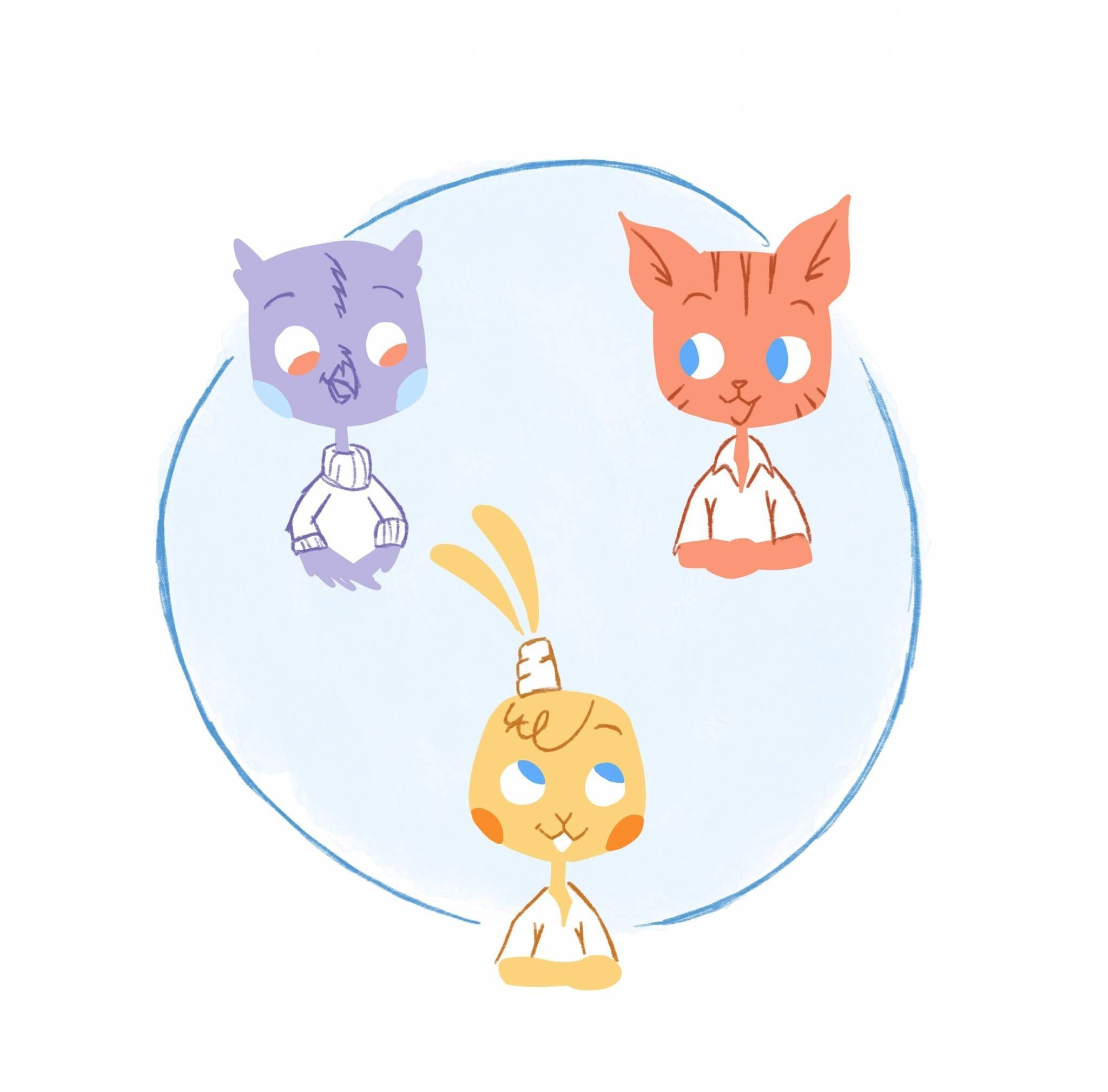

Growing up, my parents made it a priority to eat dinner together as a family. Sure, as we got older, some of us kids might not be around because we were at a friend’s house, working, or participating in an afterschool activity. But, we all knew what time dinner was. And, if we were home, your butt better be seated at the kitchen table.
No. We weren’t threatened — we wanted to be there. It was, however, an important routine for our family because enjoying a meal together brought us closer.
The importance of employees eating lunch together.
Countless other organizations have embraced that same mentality. The reason? Just like a family, eating together as a team can build camaraderie, foster deeper work relationships, and boost productivity.
“There’s a different kind of intimacy that comes with sharing food and drink with somebody,” Kevin Kniffin, visiting assistant professor of organizational behavior and leadership in the Charles H. Dyson School of Applied Economics and Management at Cornell University, told U.S. News. “The kind of bonding that can come through eating together has value in terms of cohesiveness in the work team.”
According to studies that Kniffin conducted, he found that eating lunch together boosts productivity, can be used as an in-house networking tool and makes people happier. Moreover, it improves communication and creates more closely-knit teams.
“We’ve found this has a great effect on maintaining open communication as we grow, ensuring that people never feel divided, even if we’re working on different things,” Bas Kohnke, CEO of Impraise, told Entrepreneur. “These people are always selected from different teams and include everyone from the CEO to the newest intern,” added Kohnke. “It’s a great way to mix it up and make sure people from different parts of the company also have some one-on-one time together.”
But, that’s just not all. Encouraging team meals can help attract and retain top talent, make leaders more accessible, and be used to show appreciation. It’s also a popular team-building exercise, which despite getting a bad rap, is an excellent way for co-workers to learn more about each other and have a little fun at work.
What is a virtual lunch?
Of course, this isn’t an option right, thanks to this damn virus. Thankfully, there is an easy solution here, try virtual-lunches.
The name should be self-explanatory. It’s kind of like a virtual meeting except that you are brainstorming or problem-solving. You and your team are, well, eating lunch together.
I think virtual lunches, especially right now, is a fantastic practice that people should explore,” Erin Blaskie, the Director of Marketing at Fellow.app, told Newsweek. “Aside from the obvious professional benefits—continued networking, ability to learn from others—it’s a great social practice, too, and will help prevent social isolation and loneliness.”
Blaskie isn’t alone here. Peep Laja, CEO of marketing training company CXL, also shared his positive experience with virtual lunches.
“I’m a firm believer of ‘never eat alone’ and used to consistently meet somebody over lunch three to four times a week,” Laja told Newsweek. “Now that most are practicing social distancing and self-isolation, virtual lunch just seems to make sense. We will need to build relationships, learn from each other, and contribute where we can.”
In addition to staying connected and strengthening relationships, virtual lunches can provide some much-needed normalcy.
“I find it helpful, especially in times of crisis, to find ways to make things feel as ‘normal’ as possible, and that includes socializing and connecting, even when we are meant to be practicing self-isolation,” Blaskie added. “The best part is that because we have access to technology and so many great and free tools, we can socialize and connect without ever being in the same room.”
But, even if you’ve always worked with a remote team, a virtual lunch is still a great idea if you want to reap the benefits listed above.
How to make the best of virtual lunches.
Are you ready to have a virtual lunch with a team? Hold your horses. There are some things to keep in mind if you want to have a smooth and enjoyable virtual get-together.
Designate a facilitator.
Just like any other event, virtual or in-person, you need someone to do the legwork. You know, all the fun stuff like picking a date and time and sending out invites. In this case, you need someone to plan the virtual lunch.
With a tool like Calendar, this isn’t as difficult as it seems. With its smart scheduling link, you can find the best meeting time without those pesky back-and-forth messages. But, if you decide to make this a recurring event then any online calendar will suffice. When you go to create the event, set it as repeating, and everyone will receive a reminder before it’s time to chow down.
You could also poll your team using a tool like Doodle to select an appropriate date and time and how often everyone wants to meet. It could be daily, weekly, or monthly. It’s really up to your peeps.
As for who to invite, I would say everyone. Typically, this wouldn’t fly with meetings. After all, the smaller the better. But, we don’t exactly live in regular times right now. If you feel that your organization has too many people to invite, then break things up. For example, on Mondays, you could have lunch with your marketing team, Tuesdays with HR, Wednesdays with accounting, and so forth.
Set a time limit.
Another responsibility for the facilitator is to set a time limit for lunch breaks. There’s no right or wrong here. After all, there are several factors to take into consideration. It could depend on your organization’s or state’s policies regarding lunch breaks. Or, how long you’re permitted to meet on the video conferencing tool you’re using. For instance, Zoom meetings are capped at 40-minutes for the free version.
If you’re curious, the average lunch break duration is 35 minutes. So, that’s probably a good starting point. But, I suggest you ask your team how long they would like to meet for lunch. Then, when you schedule the meeting, make sure that that’s the time allotted and that you don’t go over.
Use the right tools.
An online calendar and scheduling tool are a must. But, the other essential tool you’ll need is a video conferencing tool.
Zoom is all the rage these days. And, that will work if you’re aware of the pros and cons. But, ultimately, it depends on your specs (duration, how many participants), and how comfortable your team is using the app. For example, if your business only uses Microsoft 365 or GSuite, then you might want to stick with Teams or Hangouts/Meeting.
Some other video conferencing options you might want to look into are Cisco WebEx, Slack, GoToMeeting, Skype For Business, or Bluejeans. Just make sure that everyone tests out everything out before the event to make sure that everything’s up and running.
Find the best time(s).
As the facilitator, you hopefully have already done this. Again, online calendars and scheduling tools can assist you with this. But, there are a couple of things to be aware of here.
The first is your team’s home life. Let’s say you want to eat at noon on the dot. But, you have colleagues who have children, and that’s when they’re on break. Their kids could join in, but maybe they feel it’s easier to meet when their little ones aren’t around.
Another factor could be time zones. Again, meeting at noon EST could mean that you’re asking someone across the country to have lunch at 10 or 9 in the morning. Either push back lunch to a later time for you or have a shorter coffee or snack break instead.
Follow virtual meeting etiquette.
Just like any other virtual meeting, there are some etiquette tips to follow. These include:
- Keeping your hands off the keyboard.
- Muting your mic when not speaking.
- Speaking clearly and concisely.
- Closing non-essential windows and programs.
- Not doing anything besides eating lunch.
- Getting dressed. You don’t have to dress to the nines. But, at least put some pants on.
Keep it unstructured.
According to a case study published on Deloitte, a lack of structure, along with obviously with food and video conferencing, is key to successful virtual lunches.
“Participants thought that the real beauty of virtual socializing came from its unstructured nature, as ideas flowed freely without having a formal agenda,” the study reports. “I think the idea flows were much better, and the conversation around (topic) was much better by not having it on our agenda,” stated one participant.
Additionally, this created an atmosphere of ‘sharing’ and informal conversations.
As for leaders, don’t be the boss during this time. Instead, be a normal human being who wants to laugh, chat and eat their lunch,” writes Mark Murphy in Forbes.
“Virtual lunch breaks are here to help foster human connection and reduce the negative effects of isolation,” explains Murphy. “You’ve got lots of other times throughout the day to discuss projects and deadlines; save this time for connection.”
Shake-things up.
Finally, like eating leftovers every day of the week, you should change things up. For example, have a pizza party on a Friday to celebrate a win by ordering the pizzas and having them delivered to all of your team members. You could also ask team members to share what they’re having for lunch and pass along the recipe. Or, you could give lunch meetings, different themes, or holidays. For instance, May 28 is National Hamburger Day, so everyone on this day makes and shares their own burgers.
Another option would be to go on a virtual restaurant tour. Or, you could invite a guest speaker so that you can host a learn and lunch.











Howie Jones
My name is Howie and I'm a Customer Success Manager at Calendar. I like to ensure our customers get the best experience using our product. If you have questions email me howie at calendar.com